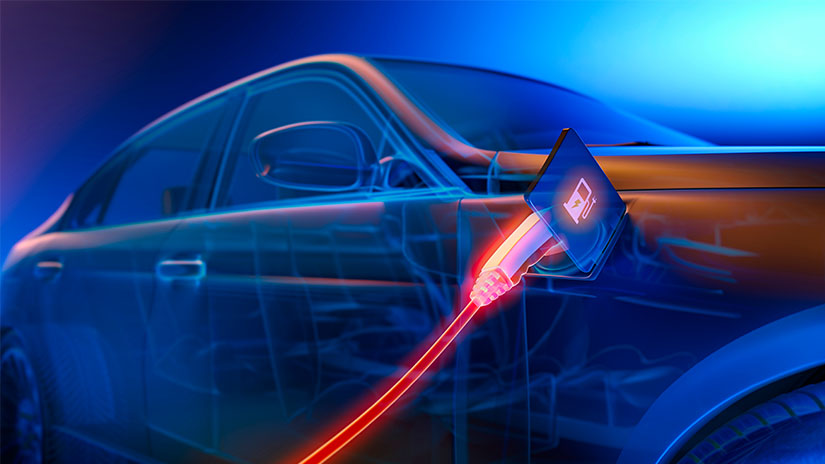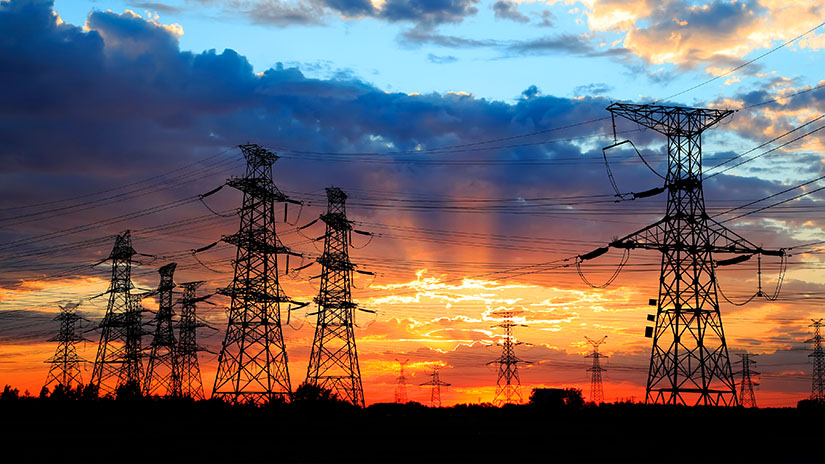By Gary Rackliffe, Vice President, Market Development and Innovation at Hitachi Energy, and Daniel Simounet, Vice President, Transportation Industry, Americas, at Hitachi Energy
Electrification of transportation is nothing new; The first electric car in the United States made its debut in 1890.1 However, as the impacts of climate change become increasingly difficult to ignore, the electrification of transportation on a massive scale is being implemented as one way to help reduce carbon emissions. Electric vehicles (EVs) embody a promising step toward a green mobility future by lowering greenhouse gas emissions (GHG), reducing costs and increasing efficiency for the commercial and public transportation sectors.
The primary driver behind the electrification of transportation is the need to reduce (GHG) emissions into the atmosphere, also known as decarbonization. Though countries and U.S. states differ in their approaches, most U.S. state-level GHG emission goals are to reduce carbon emissions by 40 percent by 2030 and 80 percent by 2050.2
To reach these ambitious goals, public and private sector organizations need to collaborate for green energy solutions, increase power generation from carbon-free sources, develop robust transmission networks to deliver energy reliably and economically, and address the challenges of transitioning to electric transportation. Vehicles powered by fossil fuels account for approximately 28 percent of GHG emissions.3 Therefore, replacing conventional gas and diesel-powered vehicles with electric vehicles powered by carbon-free generated resources is an essential part of achieving a decarbonized society.
Currently in the U.S., EVs make up just two percent of the total number of vehicles4, but that proportion is expected to grow rapidly as battery costs fall, vehicle manufacturers shift to EVs, and demand for low emissions vehicles increases. Creating a viable future for EVs relies on two main factors: efficient, fast-charging, low-cost batteries and a widely available, high-speed EV charging infrastructure. Batteries still are the most significant cost component of electric vehicles, but today’s batteries have become more efficient, and prices have fallen. And new technologies are emerging to shorten the long charging times that are a disincentive for commercial fleet operators and other businesses that rely on road-based transportation.
As the world moves to a more sustainable energy future, utility-scale renewable energy will make up increasing portions of grid energy, driven in part by the needs projected by cities and businesses. As a large part of this initiative, switching to electric vehicles will require careful orchestration of a number of factors, including operating costs, regulations, maintenance, energy storage and charging time, financing, and other demands on the grid.
To meet these rapidly evolving needs, Hitachi is leveraging its green and digital technologies and collaborating with organizations in the transportation and energy sectors to help them become climate change innovators.
From creating circular economy innovations for EV battery lifecycle management, to building smarter and more resilient power grids, Hitachi is driving tremendous growth potential for the EV industry.

Commercial and public transportation fleets, such as trucks, buses and delivery vans, will play an important role in leading the way to transportation electrification because they are likely to convert to electric sooner than personal vehicles. And because commercial vehicles have higher utilization factors, companies can realize a faster recovery of electric vehicle investments due to the lower costs of operations and maintenance.
Fleet operators are facing regulatory mandates to reduce carbon emissions. One such company is Penske Corporation, one of the largest commercial fleet operators in the U.S. Penske is fulfilling its efforts to transition to a fully electrified fleet by leveraging Hitachi's smart, scalable electric vehicle charging infrastructure solution. As an increasing number of countries and U.S. states ban new diesel-powered buses and require zero-emission electric vehicles, cities, states and businesses are likely to make significant investments rapidly.
Onsite solar and battery storage, along with developing fast charging EVs, and other grid-edge technologies, will be crucial elements of evolving electrification infrastructure. Managers of electric fleets will need specialized analytics to make sound decisions. For example, nationwide commercial fleets will need carefully designed networks of charging stations that work in concert with optimized scheduling so that costs can be minimized with off-peak charging — a system that will rely on advanced analytics.
Grid optimization solutions offer a comprehensive solution beginning at the grid connection and ending at the vehicle. Hitachi Energy is working with commercial trucking fleet operators, along with a number of transit authorities in countries around the world, to solve the complex challenges of going electric, including:

Our portfolio includes grid automation solutions, grid edge technologies, battery energy storage technologies, and a fleet charging solution. For example, Hitachi Energy’s Grid-eMotion Fleet is a scalable, modular, customizable solution for large-scale EV charging of public and commercial fleet vehicles. Grid-eMotion Fleet reduces space requirements in fleet depots by up to 60 percent and optimizes energy consumption from the grid through an integrated digital ecosystem.5
Grid-eMotion Fleet offers flexibility of connection to the utility grid and ensures compliance with power quality requirements. Available charging infrastructure can deliver a fully integrated solution with multi-output charging points between 50 to 600 kilowatts per outlet and are designed to ensure full interoperability with current and future EV fleets.
Hitachi Energy is leading the way to the future of electric transportation. Our close relationship with Hitachi Vantara enables us to leverage data analytics to capture information from the vehicles and the charging stations, which will help build a better grid. For example, the Optimise Prime EV trial in the U.K. chose Hitachi Vantara data analytics to help it monitor the charging and electrification of three vehicle fleets totaling more than 3,000 vehicles. Together, Optimise Prime and Hitachi are capturing and analyzing data from hundreds of charging stations in an initiative that will shape the future of EV charging.
The National Renewable Energy Lab found that a 25 to 38 percent increase in kilowatt hours will be needed by 2050 to support the electrification of transportation.6 Solutions such as Grid-eMotion will help optimize the grid by shifting demand to off-peak hours, helping accommodate the increased demand while minimizing the need for modifications to current infrastructure.
Electrification of transportation is already well underway, and environmental and regulatory needs, along with cost pressures, will only increase, requiring commercial fleets to rely on electric vehicles. Lower-cost charging infrastructure and expertise in data analytics will be key to making the change successfully, and Hitachi can help organizations achieve these advantages. Our expertise in infrastructure logistics and management will enable commercial and public transportation fleets to go electric with minimal disruption to operations.
The ultimate beneficiaries of electrification include all of us. Hitachi is committed to supporting accessible, carbon-free energy and mobility to promote social equity and business practices that lead to a sustainable environment through the electrification of transportation.
Our goal is to encourage market and industry change and champion green innovation for renewable energy development. We believe that enabling a stronger, smarter, greener and more reliable power grid will drive a sustainable energy future. Accessible energy is essential to a thriving global society, and only by balancing economic, social, and environmental value can true progress be made.

Vice President, Market Development and Innovation, North America, Hitachi Energy
Gary has extensive experience leading utility network control software development, marketing, sales, and business development, as well as smart grid and grid modernization innovation and strategic initiatives. He is a member of the GridWise Alliance Technical Council (past board member), the Department of Commerce Renewable Energy and Energy Efficiency Advisory Committee, and the Department of Energy ADMS Steering Committee. He holds BS and ME degrees in electric power engineering from Rensselaer Polytechnic Institute and an MBA from the Tepper School of Business at Carnegie Mellon University. He is a registered professional engineer and an IEEE senior member, has coauthored a transmission and distribution planning book, and has written numerous technical papers and articles.

Vice President, Transportation Industry, Americas, Hitachi Energy
Daniel has led the transportation industry segment for Hitachi Energy in the Americas region since 2011. He has more than 25 years of experience in the rail and transit industry in roles spanning engineering, marketing, sales, product management and business development. He has extensive experience working with a variety of associations, technical committees and NGOs in the electrical and transportation industry and is a recognized expert in the field of the electrification of transport and sustainable mobility. He currently serves as a board member of InnovÉÉ and IVI Solutions and holds an advanced technical diploma in electrical engineering from the School of Gustave Eiffel in Bordeaux, France and an Executive MBA from the University of Québec in Montreal.